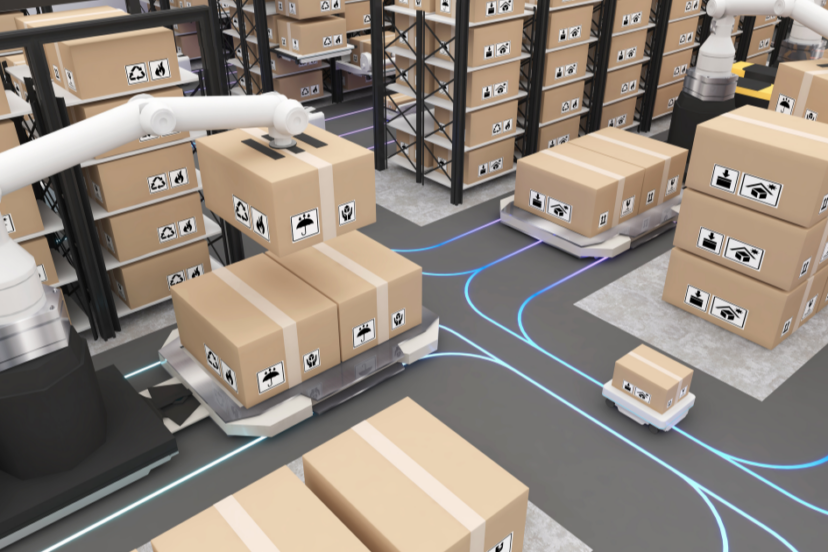Exploring AI for Inventory Management: Why It’s Essential for Modern Businesses
Have you ever wondered how businesses keep track of their products efficiently? In this article, we’ll explore the fascinating world of AI for inventory management for businesses of all sizes. From understanding the challenges of traditional inventory methods to uncovering the myriad benefits of AI integration, we’ll take you on a journey through the latest advancements and real-life examples that demonstrate the transformative power of AI.
Whether you’re a business owner looking to streamline your inventory processes or simply curious about the cutting-edge technologies driving today’s supply chains, this article has something for everyone. So grab a cup of coffee, settle in, and let’s unravel the mysteries of AI for inventory management together! Let’s dive in!
Introduction to AI in Inventory Management
AI refers to the simulation of human intelligence in machines, enabling them to perform tasks that typically require human intervention. In the realm of inventory management, AI encompasses a spectrum of technologies aimed at optimizing inventory control, forecasting, and decision-making processes.
The Role of AI in Modern Businesses
In the digital era, businesses operate in a highly dynamic environment characterized by rapidly changing consumer demands and market trends. AI empowers businesses to adapt to these changes swiftly by providing real-time insights into inventory levels, demand forecasts, and supply chain dynamics.
Challenges in Traditional Inventory Management
Human Errors
Traditional inventory management methods are prone to human errors such as data entry mistakes, misinterpretation of data, and manual counting inaccuracies. These errors can lead to stockouts, overstocking, and ultimately, loss of revenue.
Inefficient Forecasting
Conventional forecasting techniques often rely on historical data and simplistic models, failing to capture the complex patterns and variables influencing demand. As a result, businesses struggle with inaccurate demand forecasts, leading to suboptimal inventory levels.
Costly Operations
Manual inventory management processes entail significant time and labor costs, particularly in large-scale operations. Moreover, the lack of optimization leads to excessive inventory carrying costs, warehouse inefficiencies, and increased operational expenses.
Benefits of AI for Inventory Management
Improved Accuracy
AI-powered algorithms can analyze vast datasets with unparalleled accuracy, minimizing errors and optimizing inventory levels. By leveraging advanced analytics and machine learning techniques, businesses can enhance inventory accuracy and reduce discrepancies.
Enhanced Forecasting
AI algorithms excel at identifying intricate patterns in historical data and extrapolating future trends with precision. By incorporating external factors such as market dynamics, weather patterns, and consumer behavior, AI-driven forecasting models deliver more accurate demand predictions.
Cost Reduction
By automating routine tasks, optimizing inventory levels, and streamlining supply chain operations, AI helps businesses reduce costs associated with inventory management. Moreover, AI-driven insights enable proactive decision-making, mitigating the risk of excess inventory or stockouts.
AI Technologies Used in Inventory Management
AI revolutionizes inventory management through a diverse set of technologies, including:
Machine Learning (ML):
ML algorithms can analyze historical sales data, supplier information, seasonal trends, and other variables to forecast demand accurately. These predictions help businesses optimize inventory levels, reducing stockouts and overstocking.
Predictive Analytics:
Predictive analytics leverages statistical algorithms and machine learning techniques to forecast future demand, identify potential stockouts or excess inventory, and recommend optimal reorder points and quantities.
Natural Language Processing (NLP):
NLP enables systems to understand and extract insights from unstructured data sources such as customer feedback, emails, and social media. By analyzing this data, businesses can gain valuable insights into customer preferences and sentiment, which can inform inventory management decisions.
Computer Vision:
Computer vision technology can automate inventory tracking and management by analyzing images or video footage of warehouse shelves. This technology can identify stock levels, detect misplaced items, and monitor inventory movement in real time, improving accuracy and efficiency.
Robotic Process Automation (RPA):
RPA involves automating repetitive tasks such as data entry, order processing, and inventory tracking using software robots. By automating these processes, businesses can reduce errors, streamline operations, and free up human resources for more strategic tasks.
Optimization Algorithms:
Optimization algorithms help businesses determine the most efficient allocation of inventory across multiple locations or channels. These algorithms consider factors such as transportation costs, lead times, and storage constraints to minimize costs and maximize service levels.
Reinforcement Learning:
Reinforcement learning algorithms can optimize inventory management strategies by continuously learning and adapting to changing conditions. These algorithms can dynamically adjust reorder policies, pricing strategies, and inventory allocation based on real-time feedback and performance data.
Supply Chain Visibility Platforms:
AI-powered supply chain visibility platforms use data from various sources, including IoT sensors, GPS tracking, and Enterprise Resource Planning or ERP systems, to provide real-time insights into the status and location of inventory throughout the supply chain. This visibility enables businesses to proactively identify and address potential disruptions or bottlenecks.
Integration of AI into Existing Systems
The successful integration of AI into existing inventory management systems requires careful planning, collaboration, and investment. Businesses must assess their current processes, identify AI solutions that align with their goals, and provide adequate training to employees to ensure seamless adoption.
Steps to Successfully Implement AI in Inventory Management
- Assessment of Current Processes: Conduct a thorough evaluation of existing inventory management practices, identifying pain points, and areas for improvement.
- Selection of Suitable AI Solutions: Research and evaluate AI solutions tailored to the specific needs and challenges of your business, considering factors such as scalability, integration capabilities, and vendor reputation.
- Training and Integration: Provide comprehensive training to employees on AI tools and methodologies, ensuring they understand the benefits and functionalities of the new system. Integrate AI seamlessly into existing workflows, gradually phasing out outdated processes.
- Continuous Monitoring and Improvement: Continuously monitor the performance of AI-driven inventory management systems, gathering feedback from users and stakeholders. Iterate and refine strategies based on real-world insights and changing business requirements.
Future Trends in AI for Inventory Management
The future of AI in inventory management holds promising advancements, including:
- AI-powered Supply Chain Networks: Integration of AI into broader supply chain networks to optimize end-to-end inventory visibility and coordination.
- Predictive Maintenance: AI-driven predictive maintenance algorithms preemptively identify and address equipment failures, minimizing downtime and disruptions.
- Blockchain Integration: Integration of AI and blockchain technologies to enhance transparency, traceability, and trust in supply chain transactions.
Conclusion
As we come to the end of our exploration into the realm of AI for inventory management, it’s clear that the potential for innovation and optimization knows no bounds. From the eradication of human errors to the anticipation of market trends with uncanny accuracy, AI has proven itself to be a vital tool for businesses striving to thrive in an ever-evolving landscape.
So, as you reflect on the insights from this journey, remember that the true value of AI lies in its ability to augment human intelligence, not replace it. By embracing AI as a partner rather than a competitor, businesses can unlock new opportunities and chart a course toward a future where innovation knows no bounds.
Until next time, keep innovating, keep exploring, and never stop striving for excellence. The future is bright, and with AI by your side, the possibilities are endless. Wishing you continued success on your journey of discovery!
FAQs
How does AI improve inventory accuracy? AI algorithms analyze vast datasets and identify patterns to optimize inventory levels, minimizing errors and discrepancies.
What are the common challenges in implementing AI for inventory management? Challenges include data security concerns, employee resistance to change, and the need for robust infrastructure and integration capabilities.
Is AI implementation costly for small businesses? While initial investment costs may vary, AI implementation offers long-term cost savings through improved efficiency, reduced errors, and better decision-making.
Can AI adapt to changing market trends in inventory management? Yes, AI-driven forecasting models can adapt to changing market dynamics by analyzing real-time data and adjusting predictions accordingly.
What are some potential risks of relying heavily on AI for inventory management? Risks include overreliance on algorithms, data privacy concerns, and the need for human oversight to interpret AI-generated insights and ensure ethical decision-making.




